Stroll in Gulangyu Island---Six-day Tour in Xiamen and Fuzhou
After New Year's Day, I temporarily decided to use the Spring Festival holiday to go out and relax. Due to the cold winter in most areas and the lack of heating facilities in the south, Xiamen, which has a warmer climate, was finally chosen. As a result, due to the rush of time, the strategy was not prepared well, making the entire trip more messy.
The total cost is 11,249.58 yuan, including: transportation (including round-trip air tickets, airport buses, Xiamen-Gulangyu round-trip ferry tickets and Xiamen-Fuzhou train tickets) 4,644.00 yuan, accommodation 1,759.00 yuan, tickets 519.68 yuan, shopping, meals, city fares and miscellaneous expenses 4,326.90 yuan.
D1
On the morning of the 29th lunar month, we boarded the plane from Tianjin to Xiamen. After a three-hour flight, we arrived at Xiamen Airport at around 10 o'clock. Take the bus to Xiagu Wharf at the airport, and take the ferry from Xiagu Wharf to Gulangyu, the first stop of the trip.
Gulangyu Island is located in the southwest corner of Xiamen Island, facing Xiamen Island across the sea. Due to historical reasons, buildings of different Chinese and foreign styles have been well collected and preserved here, known as the "International Architectural Expo"; this island is also a fertile ground for music, with talents emerging in large numbers. The density of pianos ranks highest in the country and is also known as the "Island of Piano" and "Hometown of Music". Gulangyu Island has become a well-known tourist area in my country for its unique natural and cultural landscape.
After disembarking from Sanqiutian Wharf on Gulangyu Island, we quickly found the booked inn following the guidance of the navigation. Putting down our luggage, we went out for a stroll.
Turn a corner from the inn to the Longtou Road Food Street. Although it is approaching the Spring Festival, there are still many tourists on the Longtou Road. Walking along Longtou Road, you soon found that the streets on the island were crisscrossed with many forks, and the streets with the same name formed a ring. The entire Gulangyu Island was like a big maze, with many buildings of different styles distributed in this maze.
At first we followed the map we got from the inn to look for directions, but we soon became lost in these streets. Later, I decided to stop looking for maps and walk around the street. The trees on the island are green and colorful, and the streets are clean and quiet. Especially the red tiles and green trees in the small building look very beautiful.

Gulangyu

Gulangyu
Strolling aimlessly on the island while admiring the exotic buildings. After passing through buildings such as Haitian Building and Yuyuan, I unknowingly arrived at Haoyue Garden. Here is a Zheng Chenggong Memorial Park with a statue of Zheng Chenggong in it. It was getting dark, so we didn't go in. We followed the road to the seaside and could clearly see the statue of Zheng Chenggong. Further ahead is a sandy beach. The sea water beats against the rocks, presenting a peaceful and peaceful area. It was very windy here, so we stayed on the beach for a while and returned to Longtou Road.

Gulangyu

Gulangyu

Gulangyu

Gulangyu

Gulangyu
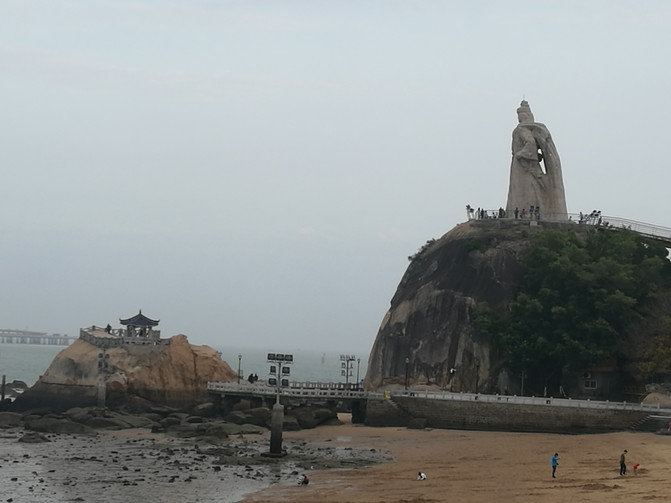
Gulangyu--Statue of Zheng Chenggong
There are many special snacks from Gulangyu gathered on Longtou Road. After having dinner on Longtou Road, I returned to the inn to rest.
D2
After having breakfast at the entrance of the inn in the morning, I started my day's stroll. Turning from Longtou Road into an alley, lush flowers and plants cling to the mottled courtyard walls, making the street more peaceful. Tourists in twos and threes passed by from time to time on the street, breaking the silence. Because the streets on the island are all curved and interconnected, signs and signs are basically useless. We encountered a fork in the road and turned into a street we had never walked before. After walking around like this, we arrived at Riguang Rock Temple.
Riguang Rock stands tall in the south of the central part of Gulangyu Island. It is made up of two huge rocks leaning against each other, one vertical and one horizontal, becoming the peak of Longtou Mountain and the highest peak of Gulangyu Island. We did not enter Sunguang Rock, but followed the path next to us to the Gangzai Houhai Beach. There are not many people on the beach, so you can take a full picture of Riguang Rock here. After taking a few photos on the beach, we walked along the beach and soon arrived at the door of the Shell Dream World. Because we wanted to go to Shuzhuang Garden, we returned the same way and came to Shuzhuang Garden located on the other side of the beach behind Gangzai. Garden.

Gulangyu
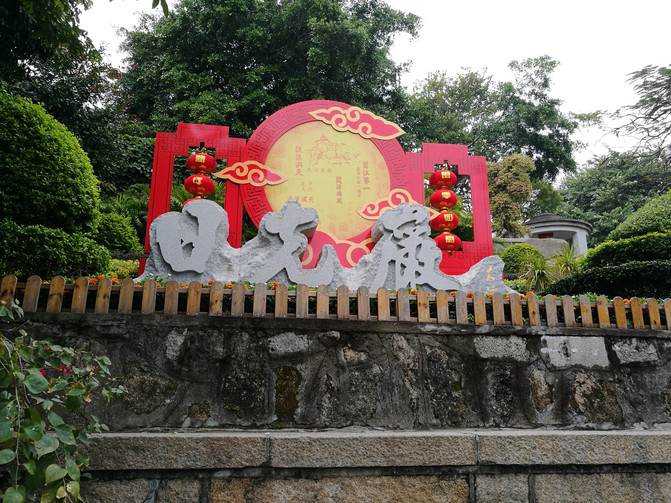
Gulangyu-Riguang Rock

Gulangyu

Gulangyu-Riguang Rock
Shuzhuang Garden is located in the south of Gulangyu Island, facing the sea and leaning against the Sunlight Rock. It was originally a private villa of the local famous scholar Lin Erjia. The owner named the garden after his word "Shuzang". The violent waves here form a dynamic three-dimensional painting with Sunguang Rock, Hero Mountain and even Songyu Corner in Haicang, which is very beautiful. The flow of the tide, the resting place of the long bridge, the colorful flowers on the shore, the rising eaves, and the surging waves of hundreds of boats in the sea reflect the blend and harmony of movement and stillness, and are integrated with the sea, mountains and sky, forming a unified Chinese traditional garden architectural group, giving the entire garden both the beauty of Jiangnan gardens and the beauty of southern Fujian gardens.

Gulangyu-Shuzhuang Garden

Gulangyu-Shuzhuang Garden

Gulangyu-Shuzhuang Garden

Gulangyu-Shuzhuang Garden
It was nearly noon when we left Shuzhuang Garden. We had lunch on Longtou Road and returned to the inn to rest. At around three o'clock in the afternoon, we went out and continued to stroll around the island. We followed Zhonghua Road to Meihua Beach, sat on the beach and listened to the sound of the waves, enjoying this rare tranquility and comfort.

Gulangyu-Meihua Beach

Gulangyu-Meihua Beach
It was nearly evening, we returned from Meihua Beach and came to Longtou Road. Although today is New Year's Eve, there are still many tourists on the island. Most of the shops on Longtou Road are still open. We had New Year's Eve dinner at a restaurant we saw at noon and wandered around for a while before returning to the inn to rest.
D3
We left Gulangyu Island by boat early this morning and came to downtown Xiamen.
I saw an article introducing Ota Island on the Internet and thought it was not bad. I put down my luggage and went straight to Ota Island. After more than an hour's drive, we arrive at Ota Island. Only when I arrived here did I realize that this is a small village with no attractions. After strolling around the Taiwan duty-free shop next to the bus station, I took a bus back to downtown Xiamen. Take a bus directly from the bus station to Xiamen Botanical Garden.
Xiamen Botanical Garden is located on Wanshi Mountain in the southeastern corner of Xiamen City. The park is rich in vegetation. There are 15 special parks, including pine and fir gardens, rose gardens, bamboo trails, palm islands, sandy plant areas, araucaria sparse forest grassland, rainforest plant world, vine plant area, flower garden, medicinal plant area, colorful leaf shrub area, Baihua Hall, Cycas Park, Introduction and domestication area, and City Garden. Among them, the Rainforest Plant World and the sandy plant area are good places to take photos.
It is the first day of the New Year and there are many people here. It was already past 3 o'clock in the afternoon after visiting the Rainforest Plant World and the Psammophyte Area. We didn't go anywhere else and took the sightseeing bus directly back to the gate.

Xiamen Botanical Garden-Rainforest Plant World

Xiamen Botanical Garden-Rainforest Plant World

Xiamen Botanical Garden-Rainforest Plant World

Xiamen Botanical Garden-Rainforest Plant World

Xiamen Botanical Garden--Desert Plant Area
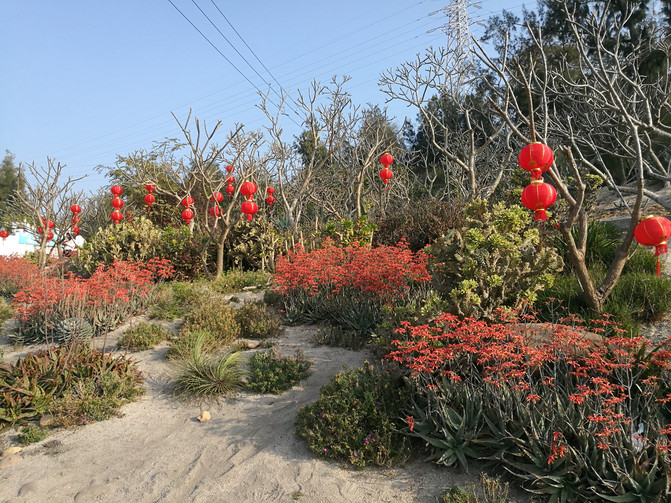
Xiamen Botanical Garden--Desert Plant Area

Xiamen Botanical Garden--Desert Plant Area

Xiamen Botanical Garden--Desert Plant Area
After leaving the Botanical Garden, there is a bus at the entrance that goes directly to Nanputuo Temple.
Nanputuo Temple is located at the foot of Wulao Peak in the southeast of Xiamen City, Fujian Province. It is one of the Buddhist resorts in southern Fujian. In the temple, the bloody script "Miaofa Lotus Sutra" during the Wanli period of the Ming Dynasty and He Chaozong's famous white porcelain Guanyin are the most valuable.
We walked around the temple and bought the famous vegetarian cakes here. We wanted to taste vegetarian meals in the temple. As a result, since it was the first day of the Lunar New Year, vegetarian meals were only available until 6:30, so we had to go elsewhere to settle dinner.

nanputuo temple

nanputuo temple

nanputuo temple

nanputuo temple
Since I visited the Xiamen Botanical Garden and Nanputuo Temple, which were scheduled to visit the next day, I temporarily booked a one-day trip to Nanjing Tulou online.
D4
Take a tour of Nanjing Tulou early in the morning by taking a tour bus from a travel agency.
Fujian Tulou originated in the Song Dynasty, gradually matured during the Ming and Qing Dynasties, and has continued to this day. Fujian Tulou is a unique large-scale rammed earth residential building in mountainous areas in the world. It sits on the mountain and has a reasonable layout. It absorbs the "feng shui" concept of traditional Chinese architectural planning, adapts to the living and defense requirements of living together, and cleverly utilizes the narrow mountains. The flat land and local raw soil, wood, pebbles and other building materials are a self-contained, economical, strong, and highly defensive, and extremely beautiful raw soil high-rise building model. The building materials of Fujian Tulou are very unique. They are composed of clay, glutinous rice, brown sugar, bamboo chips and water. The built Tulou is warm in winter and cool in summer, and has strong resistance to typhoons and earthquakes. Nanjing Tulou refers to the Tulou located in the mountainous areas of Nanjing, Hua 'an, Pinghe, Zhao' an, Yunxiao, Zhangpu and other counties in Zhangzhou City. It is famous for its long history, large number, large scale, strange shape, and unique style. It is known as the "mythical mountain building."
After a three-hour drive, we arrived at Yunshuiyao Ancient Town in Nanjing at noon.
The first thing to visit was Hegui Building. The Hegui Building is a square earthen building built on a swamp ground with an inner corridor. There are two wells in the building, which are no more than ten meters apart, but one is as clear as a mirror and has sweet water, while the other is turbid and yellow and filthy. It is called the "Yinyang Well".
The door of Hegui Building is very small. Due to the large number of people during the holidays, the door is very crowded. Entering the tulou and jumping on the ground on the patio, you can feel the slight tremor of the ground. Now there are small shops selling local specialties on the first floor of the Tulou. We are not allowed to visit upstairs. We only walked around the yard.

Nanjing Tulou-Hegui Building

Nanjing Tulou-Hegui Building

Nanjing Tulou-Hegui Building
After coming out of Hegui Building, I followed the tour guide to Yunshuiyao Ancient Town.

Yunshuiyao Ancient Town

Yunshuiyao Ancient Town

Yunshuiyao Ancient Town
Yunshuiyao Ancient Town is an ancient village with a long history. The village contains ancient ancient roads, century-old banyan trees, magical earthen buildings, and clear waters of Lingshan Mountain, all giving people a feeling of detachment.
The current Yunshuiyao Ancient Town has lost its former tranquility and has a strong commercial atmosphere. Passing through a small bridge in Yunshuiyao Ancient Town, we arrived at Huaiyuan Tower.
Huaiyuan Tower is a double-ring round earthen building with exquisite architectural craftsmanship and well-protected. It faces north and south. There is a couplet on the door of the building: "Huaiyidun and above are here to cultivate Qi and follow the teachings of our ancestors, and the mountains are far away and the waters are near." The most eye-catching feature of Huaiyuan Tower lies in the ancestral hall at the core of the Inner Court, which is also the place where the family's children study.

Nanjing Tulou-Huaiyuan Building

Nanjing Tulou-Huaiyuan Building

Nanjing Tulou-Huaiyuan Building

Nanjing Tulou-Huaiyuan Building
Due to the crowded crowd, I no longer had the interest in sightseeing, so I walked around inside and came out.
Taking advantage of the gap between the tour guide and other people, we visited the Tulou Museum opposite Huaiyuan Tower. It shows some scenes of the daily life of Tulou people, and you can also go upstairs to visit the internal structure of Tulou. But due to the tight schedule and the large number of people, we just took a quick look and came out. At around 8 o'clock in the evening, we returned to downtown Xiamen.

Tulou Museum

Tulou Museum

Tulou Museum

Tulou Museum
D5
Because I want to taste Fuzhou's famous snack-Fuzhou Meat Swallow, the last stop of this trip is Fuzhou. Take the train from Xiamen to Fuzhou in the morning and arrive at Fuzhou Station at around 10 o'clock.
Fuzhou Meat Swallow, also known as Taiping Swallow, is a famous specialty snack in Fuzhou, Fujian. After checking in at the hotel, we went directly to Fuzhou Tongli Rouyan Old Store located in Sanfang Qi Lane.

Fuzhou Tongli Meat Swallow
After eating our fill, we began to stroll around Sanfang and Qixiang.
Fuzhou's "three lanes and seven alleys" were formed in Luocheng, King Shenzhi of the Tang Dynasty. The three lanes are: Yijin Lane, Wenru Lane, and Guanglu Lane; the "seven lanes" are: Yangqiao Lane, Langguan Lane, Anmin Lane, Huang Lane, Ta Lane, Gong Lane, and Jipi Lane. In this neighborhood, there are crisscross alleys and paved with stone slabs. It is the largest and most complete ancient architectural block of the Ming and Qing Dynasties preserved in the urban center of China.

sanfang qixiang

sanfang qixiang

sanfang qixiang
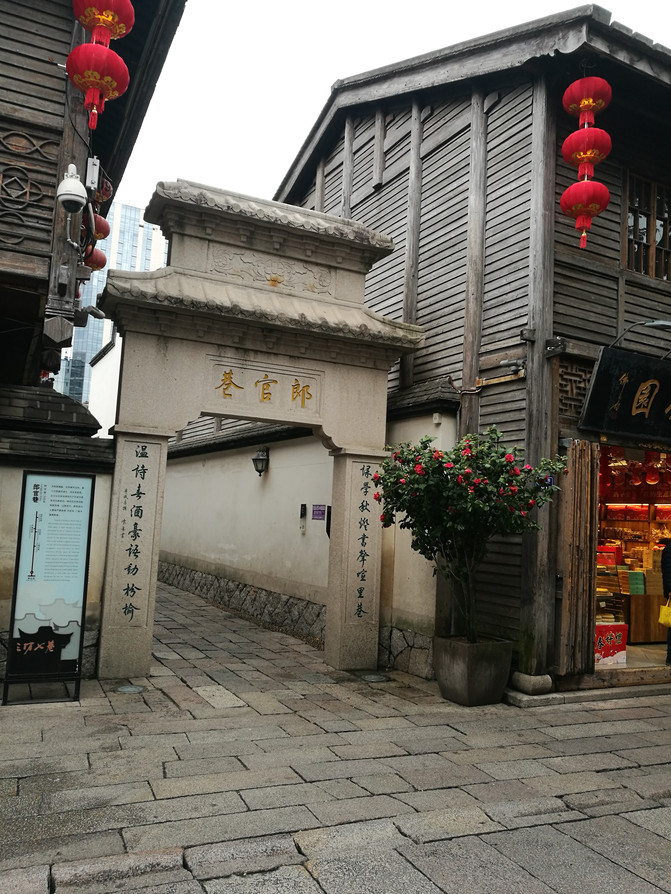
sanfang qixiang

sanfang qixiang

sanfang qixiang
In the evening, we had dinner at Daming Food Street opposite Sanfang and Qixiang, and then returned to the hotel to rest.

Daming Food Street

Daming Food Street

Daming Food Street
D6
Early this morning, we came to Sanfang and Qixiang again. In the morning, the three alleys and seven alleys were no longer as noisy as yesterday afternoon. The shops had just opened, and there were only two or three tourists on the streets. We tasted local snacks here. Through Sanfang and Seven Alley, we came to Yushan Scenic Area.
Yushan, also known as "Jiuxian Mountain" and "Jiuri Mountain", has many scenic spots and historic sites on the mountain, such as Jiuri Terrace, Lion Rock, Jixian Rock, Xiaohua Peak, as well as the Qi Gong Temple, Pingyuan Terrace, Dizui Stone, Penglai Pavilion, and Yan Fu Reading Office Fayutang. In addition, there are many small and exquisite pavilions, such as Vientiane Pavilion, Xicui Pavilion, and Fushan Jingshe. These pavilions and pavilions undulating along the hills, vaguely among the pines, bamboo and flowers. The scenery is quiet and fascinating.
We entered from Baita Temple, passed through the stone path to the east of the main hall, and climbed the mountain. There is a square Vientiane Pavilion on the mountainside, with rocks standing beside the pavilion, overlapping to form a fun. Turn left from the Vientiane Pavilion and go up the stone steps to the Qi Gong Temple. Then pass through Lion Rock, Yan Fu's Reading Office, Fayutang, etc., and then go down the mountain. Not only are flowers and trees flourishing on the mountain, but there are also many cliff stone carvings.

Yushan Scenic Area

Yushan Scenic Area

Yushan Scenic Area
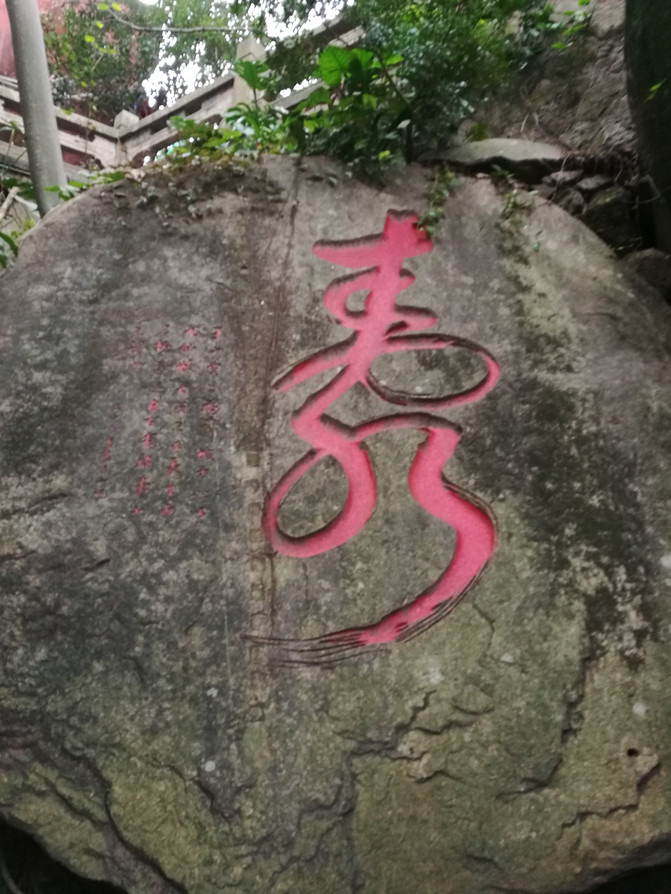
Yushan Scenic Area

Yushan Scenic Area

Yushan Scenic Area

Yushan Scenic Area

Yushan Scenic Area
After returning from Yushan Scenic Area, we took the 17:55 flight back to Tianjin.
March 2019
Previous Article:Xiamen is an excellent place for parents and children, a day's experience in the science and technology museum that combines education
Next Article:Worship of foodies: Tulong is a prince and a bandit leader!
